Technically, The Twilight Girls is an exploitation film. It features less nuance and more nudity than earlier schoolgirl films like Madchen in Uniform or Olivia. However, being released in 1957 means it also predates the true exploitation which kicked off in the 1960’s. Still, the film is more interested in sexuality than sensitivity when it comes to this topic. It’s sort of an interesting middle ground between earlier WLW schoolgirl films and films of the 60’s and 70’s which make the The Twilight Girls’ occasional shot of nudity or lesbianism look absolutely quaint by comparison.
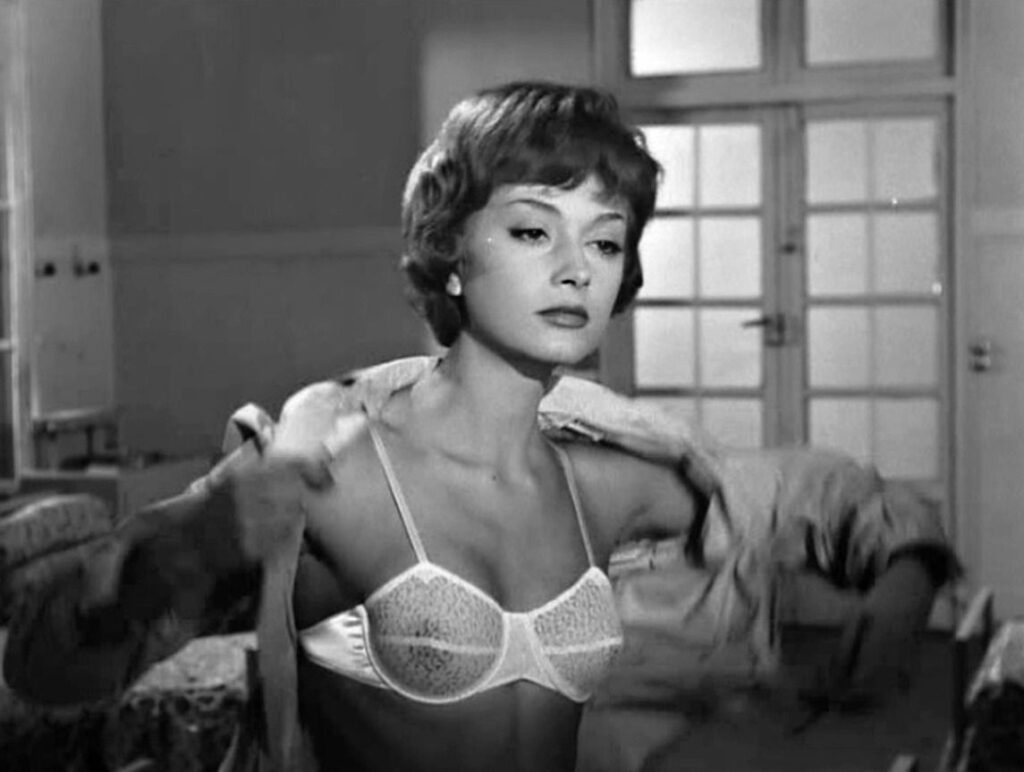
The Twilight Girls focuses on a group of seventeen year old schoolgirls. In the timeless words of Britney Spears, the characters are not girls, but not yet women. But certainly they’re at an age where schoolwork comes second to their hormones. Catherine is a new student at the school. Quickly, her schoolmate Monica develops a crush on her. Previously, Monica had a thing going with a girl named Martha. By “a thing” I mean they held hands when they went to sleep. But Monica begins ignoring Martha in favour of Catherine. However, Catherine is more interested in boys. She meets a musician named Dean and falls deeply. The young couple plan to marry but are thwarted by the fact that being 17, Catherine needs adult permission to marry which is not granted.
The film is a mixed bag of queerness. Catherine is the main character and she’s probably not queer. On the other hand, four of the supporting characters are. Monica is the primary one. She gets entire inner monologues about how much she loves Catherine and a montage where she gazes at her from a distance. Then, there’s Martha, Monica’s spurned lover. Martha and Monica never do more onscreen than hold hands, though. The only two girls who actually get to kiss are two even less important random girls. Still, because they’re not major characters, they don’t have a story arc so as far as we’re concerned, they’re just two girls who share a bed, kiss and don’t have any relationship drama. Good for them.
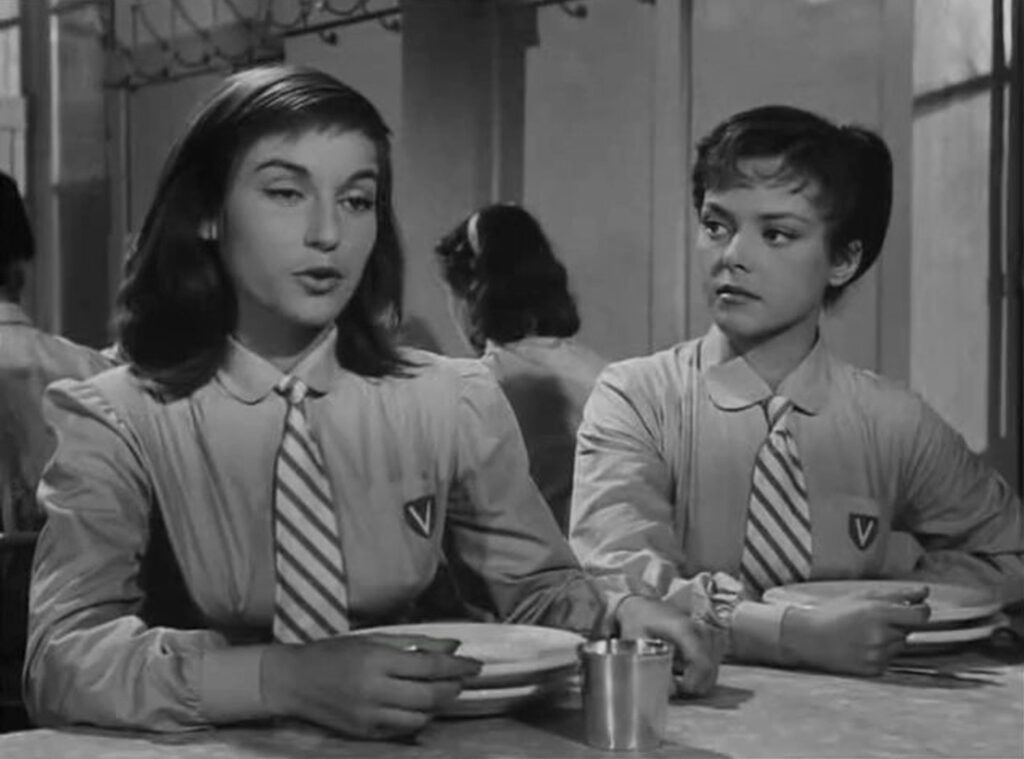
In this era of early exploitation, there was either a requirement or at least an expectation that these films have “educational” value. So, we get that great double standard of exploiting and objectifying female sexuality while also moralizing about why it’s wrong. The “lesson” of the film is basically, don’t be horny. Wait until you’re 18 to get married. What’s funny is that Catherine, the straight character gets the brunt of this. She’s the one who suffers heartbreak and learns a lesson about the dangers of young love. It’s easy to read the film’s moral as don’t be straight. It was Catherine’s boy-crazy attitude that caused drama. All the other girls who were happy to just kiss each other and/or pictures of Marlon Brando don’t have to learn any sort of lesson. I love this unintentionally subversive take that teen homosexuality is maybe good, actually.
The fact that I can read the film is subversive is definitely an accident. I couldn’t track down the original French version of the film. Instead, I watched the English version which had Radley Metzger credited as an adapter. Based on what I’ve seen of Metzger’s work, I feel comfortable describing him as a horny idiot. Still, whether it was accident or on purpose, I’m glad that this work wasn’t as homophobic as it could be. The montage of Monica longing for Catherine has a really good use of the gaze, for example. Monica and the camera focus on Catherine’s face and her beauty rather than segmenting her into body parts. Monica is also the most sympathetic character. By contrast, Catherine seems manipulative and cold when she shuns Monica’s obvious affections.
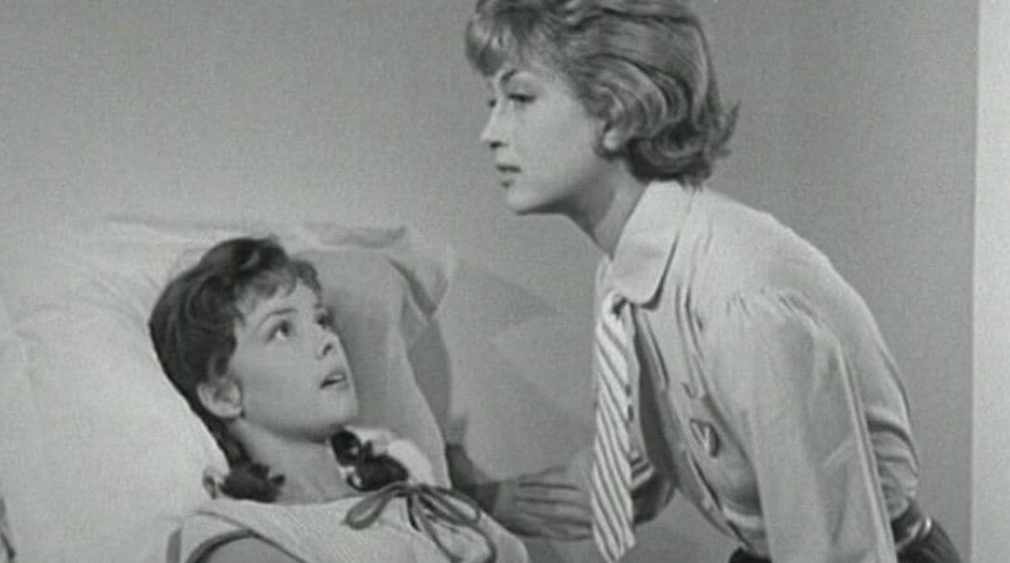
Some of this is undone by the very end of the film. A teacher looks at the girls and ruminates about how all of this seems important now but when they’re adults, they’ll see the world differently. There’s definitely an undertone through the film of queerness being something temporary that the girls will grow out of. What slightly undercuts this message of homosexuality being something immature to be grown out of is how old all the characters look. I definitely thought Catherine was a new teacher at the school in her first scene. The population of the boarding school is kind of nuts. It’s a bunch of actual girls aged 8 through maybe 14 and then one group of 25 year old women. Because of the fact that all the actresses look so overtly adult, the film’s opinion that they’ll “grow out” of their lesbian feelings rings very false.
The Twilight Girls is interesting but exceedingly middling. It is a film made off of the backs of Madchen in Uniform or Olivia but with much more focus on the scandalous elements. Still, it’s only 1957 so we’ve not reached peak exploitation yet. Even Radley Metzger’s later film, Therese and Isabelle turned the exploitation dial up by about 25. The Twilight Girls is the awkward transition period between these films. There are some positives, but the film also lacks a level of depth, has some obnoxious moralizing and doesn’t think much of homosexuality despite its focus on it. Still, this is an incredibly interesting movie as a cultural time capsule and I’m a big fan of the 1950’s short haircuts.
Overall rating: 5.1/10
Other WLW films in similar genres
Boarding schools
Falling for a straight friend
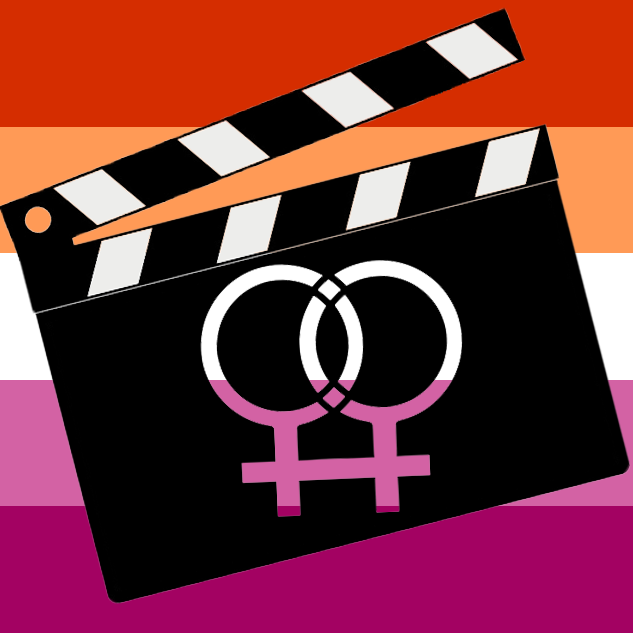
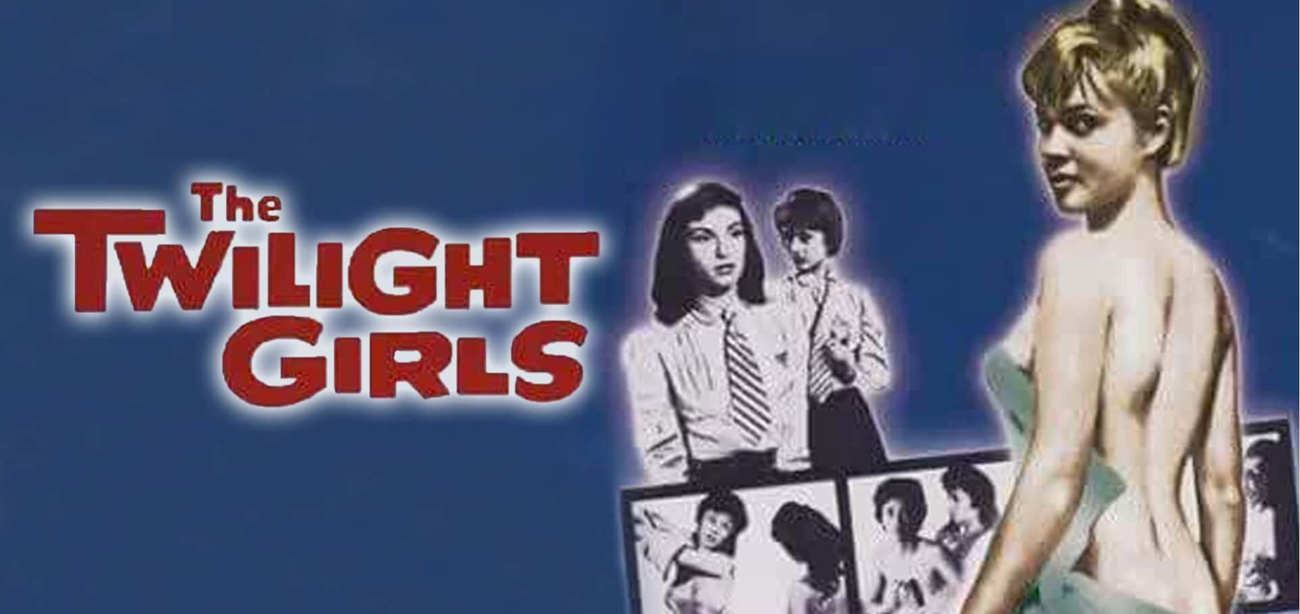
Be First to Comment